Fluffy Mini Chinese Sponge Cakes Recipe: Sweet Homemade Treat
Sweet memories often dance through kitchens when mini Chinese sponge cakes emerge from warm ovens, filling spaces with delightful aromas.
Soft clouds of delicate texture promise incredible moments of pure enjoyment.
Gentle whispers of culinary tradition blend perfectly with modern baking techniques.
Nostalgic recipes like these connect generations through simple ingredients and shared experiences.
Delectable treats waiting to become your newest kitchen adventure sparkle with potential.
Playful and light, these mini cakes invite you to create something magical that will surprise and delight everyone around your table.
Bake with passion and watch magic unfold in every delicious bite.
Mini Chinese Sponge Cakes as Soft as Clouds
Whip Up Effortless Delights: Quick and Easy Mini Chinese Sponge Cakes
Mini Chinese Sponge Cakes – What’s Inside
Main Cake Ingredients:Liquid and Flavor Ingredients:Preparation Ingredients:Sponge Cake Instructions for a Chinese Dessert Classic
Step 1: Prepare Baking Setup
Warm up your oven to 175°C (350°F).
Get your mini cake molds or muffin tin ready with cupcake liners.
Step 2: Create Dry Mixture
Grab a mixing bowl and sift together these ingredients:Set the dry blend aside for later.
Step 3: Whip Egg Mixture
Pull out a large mixing bowl and use an electric mixer to beat eggs and sugar.
Whip them on high speed until the mixture becomes super fluffy and almost triples in volume.
This should take about 5-7 minutes.
Step 4: Blend Liquid Components
Pour in:Mix thoroughly until everything combines smoothly.
Step 5: Combine Wet and Dry Ingredients
Gently fold the dry ingredients into the wet mixture.
Use a spatula and mix carefully to keep the batter light and airy.
Stop mixing as soon as ingredients are just combined.
Step 6: Fill Baking Containers
Distribute the batter evenly into your mini cake molds or cupcake liners.
Fill each cavity about three-quarters full for perfect rising.
Step 7: Bake to Perfection
Slide the molds into the preheated oven.
Bake for 18-20 minutes.
Check doneness by inserting a toothpick – it should come out clean when the cakes are ready.
Step 8: Cool and Enjoy
Remove the cakes from the oven and let them rest in the molds for a few minutes.
Transfer to a cooling rack and serve warm for the most delightful texture.
Sponge Cake Tips in Mini Chinese Style
Save Mini Chinese Sponge Cakes Fresh
Best Bites with Chinese Sponge Cakes
Mini Sponge Cakes Regional Recipe Spins
FAQs
The long beating time incorporates air into the eggs, creating a light, fluffy texture that makes these mini cakes soft and delicate.
Yes, you can use cornstarch as a direct replacement if custard powder is unavailable. The cornstarch helps create a tender crumb in the cake.
Overmixing will deflate the air bubbles and make the cakes dense. Fold gently just until the dry ingredients are incorporated, stopping when no flour streaks remain.
These mini Chinese sponge cakes are lighter, more delicate, and have a distinct soft texture typical of traditional Chinese bakery-style cakes.
Print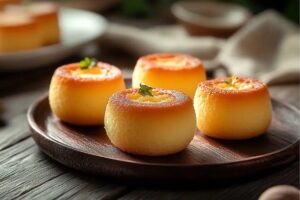
Mini Chinese Sponge Cakes Recipe
- Total Time: 35 minutes
- Yield: 12 1x
Description
Delicate “mini Chinese sponge cakes” offer a whisper-light texture that melts on your palate with subtle sweetness. Light and airy, these petite treats bring Shanghai’s delicate pastry tradition right to your kitchen.
Ingredients
Main Ingredients:
- 4 large eggs
- 3/4 cup (180 milliliters) granulated sugar
- 1/4 cup (60 milliliters) milk
- 1/4 cup (60 milliliters) vegetable oil
Dry Ingredients:
- 1 cup (125 grams) all-purpose flour
- 1/4 cup (30 grams) custard powder (or cornstarch)
- 1 teaspoon baking powder
- 1/2 teaspoon baking soda
Flavoring:
- 1 teaspoon vanilla extract
Instructions
- Prepare the baking environment by warming the oven to 175°C (350°F) and arranging mini cake molds or cupcake liners in a muffin tin.
- Carefully sift flour, custard powder, baking powder, and baking soda into a separate container, ensuring a smooth, lump-free mixture.
- Utilize an electric mixer to whip eggs and sugar together, creating a voluminous and airy texture that becomes pale and significantly increased in volume.
- Incorporate milk, vegetable oil, and vanilla extract into the egg mixture, blending until the liquid components merge seamlessly.
- Gently fold the dry ingredient mixture into the wet ingredients, using a spatula with delicate strokes to maintain the batter’s inherent airiness and prevent deflation.
- Distribute the batter evenly across the prepared molds, filling each cavity approximately three-quarters full to allow room for rising during baking.
- Place the filled molds in the preheated oven and bake for 18-20 minutes, monitoring until a inserted toothpick emerges completely clean.
- Extract the miniature cakes from the oven and allow them to rest momentarily within the molds, permitting a gradual cooling process before releasing and serving.
Notes
- Ensure eggs are at room temperature for better volume and smoother batter integration.
- Avoid overmixing the batter to prevent tough, dense cakes; fold gently until ingredients are just combined.
- Use a light hand when folding dry ingredients to maintain the delicate, airy texture of these mini sponge cakes.
- Experiment with flavor variations by adding lemon zest, matcha powder, or a splash of almond extract for a unique twist.
- Prep Time: 15 minutes
- Cook Time: 20 minutes
- Category: Desserts, Snacks
- Method: Baking
- Cuisine: Chinese
Nutrition
- Serving Size: 12
- Calories: 150
- Sugar: 6 g
- Sodium: 70 mg
- Fat: 6 g
- Saturated Fat: 1 g
- Unsaturated Fat: 4 g
- Trans Fat: 0 g
- Carbohydrates: 22 g
- Fiber: 0 g
- Protein: 3 g
- Cholesterol: 70 mg

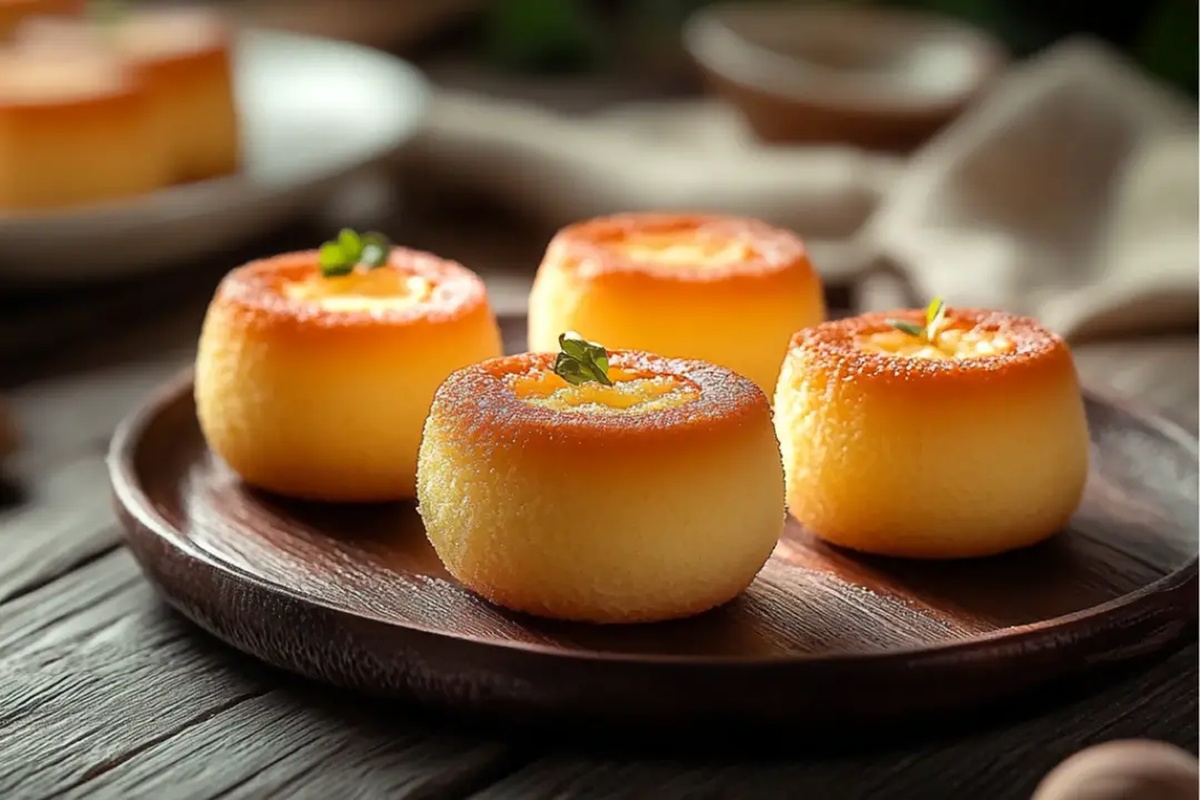
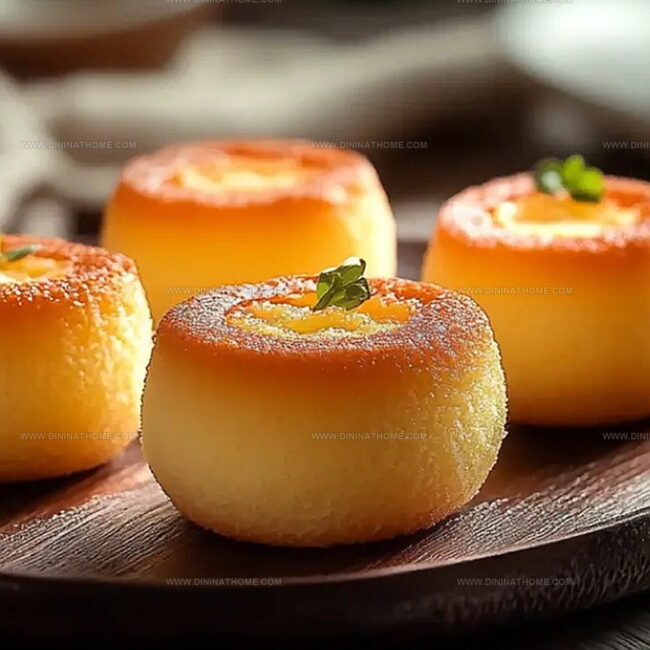
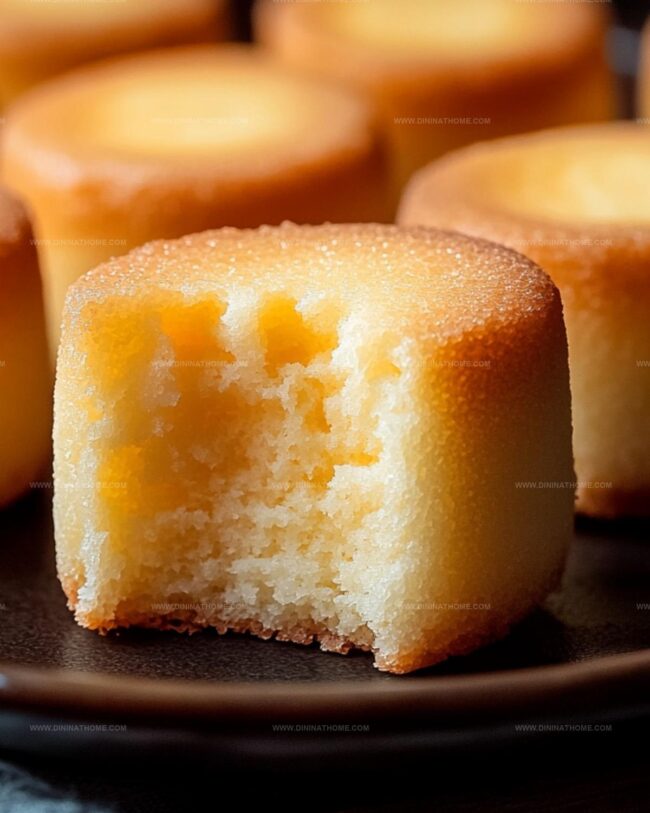
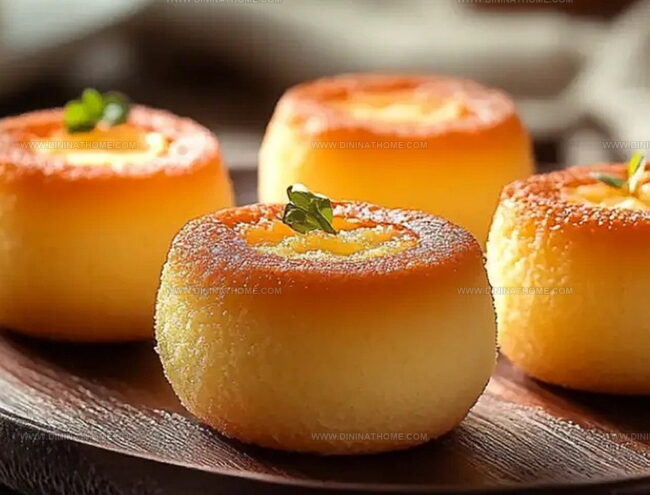
James Walker
Lead Recipe Developer & Culinary Educator
Expertise
Southern Cuisine & Farm-to-Table Cooking, Recipe Development & Testing, Culinary Education & Instruction
Education
School: Auguste Escoffier School of Culinary Arts
Program: Diploma in Culinary Arts and Operations
Focus: Comprehensive training in classical and modern culinary techniques, kitchen operations, and farm-to-table practices.
James didn’t learn cooking from a TV show, he learned it from busy kitchens, family gatherings, and long afternoons spent testing recipes the hard way.
After training at the Auguste Escoffier School of Culinary Arts, he brought his love for real, down-to-earth food to every dish he makes.
At Dining At Home, James loves building recipes that feel familiar but still have something special, like adding a twist to a classic or making a slow Sunday dinner feel brand new.
When he’s not in the kitchen, you’ll probably find him swapping garden tips at the farmers’ market or teaching his daughter how to flip pancakes without a mess (almost).